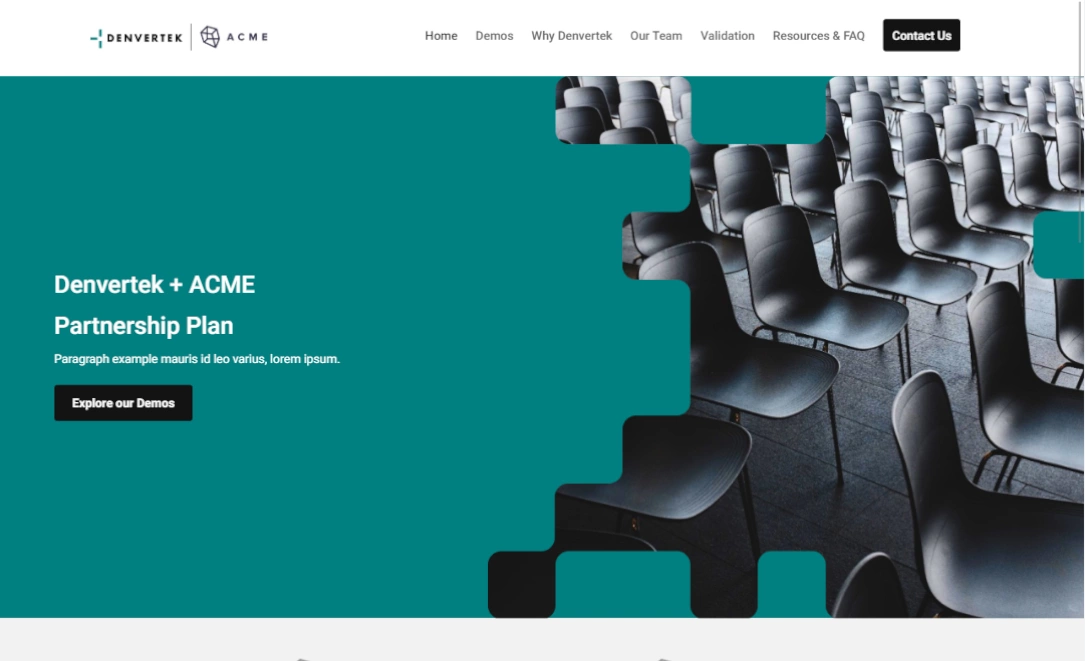While all industries have different goals and procedures, all sales teams have one shared desire: increasing sales revenue.
While this may look slightly different when it’s happening out in the field, for the most part, it’ll be driven by three key factors: sales activity, conversion rate, and average deal size. Improving these three sales enablement metrics will surely boost your revenue, but there are many other smaller metrics you can improve to really skyrocket it. These metrics are part of the standard sales enablement benchmarks.
We’ve broken down these three factors into ten actionable and observable sales enablement metrics your team can use to start seeing results.
Sales enablement metrics to improve your sales revenue
Measuring sales activity metrics
Sales activity is what your sales reps are doing on a day-to-day basis. Improving sales activity metrics means generating more leads, contacting them, and creating opportunities for conversion. These are important indicators when looking at sales indicators and sales opportunity tracking. For our purposes, we’ll break down sales activity into two key metrics: meetings set and opportunities created.
Tracking set meetings as sales metric
Before you can work with any client, you need to get your foot in the door. Getting prospects to meet with your SDRs allows you to qualify them and move them further down the sales funnel. However, convincing prospects to meet can be a struggle for teams, and you’re not alone if you’re having a hard time getting more meetings. It’s essential to conduct a sales enablement assessment.
Here, it’s all about quantity. The more meetings you can set, the more opportunities you have to close. If you hold 40 sales meetings a month rather than 20, you’ll probably hear “no” more often, but you’ll likely hear “yes” more often, too. Based on average conversion benchmarks across B2B companies, that would mean the difference between 3 sales.
While there’s no flawless system to land more meetings, there are a few tricks of the trade that seasoned pros recommend:
- Offer something of value: industry-specific research, estimates, valuations, or demos are great ways to incentivize a client to sit down with you for a few minutes while demonstrating value at the same time.
- Keep up with industry news and trends: Tailor your communication with your target around specific news, recent findings, or trends in their industry.
- Don’t get snobby about who you invite to the party: While you may be eager to chase the MVPs, make friends with executive assistants when you can, as they can offer a foot in the door.
Importance of opportunities created KPI
Along with meetings, the amount of opportunities being created by your reps is another helpful metric to track. That’ll tell you how effective your team is at generating new leads and delivering them to AEs. With this, you get an insight into the crucial sales conversion metrics.
For the most part, improving your opportunity rate involves making good use of your CRM. Many CRMs are equipped to automate lead nurture processes, which can otherwise take a lot of time and planning. Speed-to-lead is vital, and automated communication can help you respond as quickly as possible to a qualified prospect.
With a robust pipeline that keeps communication constant, nurturing leads is effortless and can be fruitful. The goal here is to start narrowing your funnel on leads that have been vetted and show a strong indication that they are likely to be open to meeting or closing.
Impact of sales conversion rates
If you want to understand or find out what your sales revenue is, you’ll have to take a look at your conversion rate. This is a fundamental aspect of sales enablement analytics.
Your conversion rate is the amount of activity you have been able to move toward actual sales, reflecting the sales enablement KPI’s you have in place. It’s a metric that reveals how effective your sales activities are. For obvious reasons, increasing your conversion rate will also increase your total revenue.
Increasing your conversion rate is a lot simpler than it may seem, especially if you’re ready to leverage a couple of tools to help your team out. When you’re targeting conversion rates to help drive sales revenue, you’re likely looking to speed up your sales cycles and find effective ways to close.
Now, there’s no one size fits all solution here, but there are some tried and true strategies that have been shown to work.
The first way to increase conversion rates is through staffing and arming your team with dedicated area experts who can impart wisdom to the rest of the team. The other way (which probably costs a lot less), is to elevate your content delivery methods.
Measuring marketing collateral’s performance in sales enablement
Your marketing collateral is meant to entice new customers and get them started down the sales funnel. Relevant content is linked to high levels of engagement and better conversion rates down the line. Improving your marketing content, processes, and tools can increase the number of leads you generate and, therefore, how many deals you can close.
One way to increase your marketing performance is by elevating your content delivery strategy. Opt for highly targeted, information-rich content through a devoted platform, like a microsite. Not only will your team stand out, but you can also track conversion rates in a whole new way.
With a microsite, you’ll easily be able to narrow down which strategies are working most in terms of nurturing engagement levels and which don’t so that your team can pivot. It also allows you to tailor your content for targeted follow-up, narrowing your funnel without having to do any extra leg work.
Evaluating sales cycle length
The average length of your sales cycle reveals to you how much time is spent before closing. It’s an important metric that can expose the resources you expend on your sales before seeing a profit.
Sales cycles are calculated by dividing the number of closed deals by the total number of days it takes to close. When it comes to how the length of your sales cycle affects revenue, time is money.
Creating an efficient lead pipeline that can effectively get your clients from the top to the bottom of your sales funnel makes it easy for you to not only churn out more sales but also allocate resources where they’re needed most. Closing quickly increases your chances of being one of the only contenders in your clients’ eyes, making the case for your value proposition stronger.
CRMs are really helpful tools here because they manage client pipelines for you, telling you exactly where in the funnel your clients are. Some offer tools that keep leads warm until they’re ready to close, taking some of the leg work out of a process that can be pretty involved.
Harnessing effective calls to action
The performance of your CTAs is also important to track. An effective CTA will move your target audience to a specific action or behavior. This could be to capture lead information, direct prospects to your website, or try out a demo of your product. CTAs correlate with sales activity and conversion rates, and improving your CTAs can ultimately affect your bottom line.
Here are some CTA examples:
- “Want to know more about how the [x] industry is changing? Sign up for our newsletter.”
- “Click here for more tools your team can use to see better results.”
- “Learn more about how our services are right for your business.”
Microsites are great places to strategically sprinkle in CTAs because of how targeted the content is. They can elevate your digital sales content in other ways, too: click here to find out how (see what we did there?).
Sales enablement impact on onboarding time
Once you close a deal, you should aim to keep it. Typically, there’s an onboarding period for your client once they start using your product or service. The experience your users have during their first few months should be a full demonstration of what you have to offer so that you can build lasting relationships and continue to receive their business once the contract is ended.
This is a crucial part of your activity rates that will depend heavily on effective conversion strategies, so ham up those CTAs, email offers, and follow-up communication!
Significance of average deal size
The glitz and glamor of sales come in the sparkling price tag hanging off the last deal you closed. But, as any good salesperson knows, sales are not about one-time deals.
A high-value sale is exciting, of course, but the real goal to driving revenue is creating an opportunity for you to wield a deal that signs for longer terms, like a 2-3 year service contract. It makes it easier for you to reap the revenue of a partnership without spending the time and resources on your activity and conversion efforts every month.
Another way to see more bang for your buck (in terms of what you’ve invested into your partnership), is to offer your client options for add-ons and bundles. This will increase your deal value through additional value props they can’t refuse.
Sales enablement’s role in quota attainment
Teamwork makes the dream work!
Tracking how much your team members are contributing to monthly or quarterly sales totals is important for accountability and restructuring purposes and can expose opportunities for training.
If your conversion rates and deal size are low, this is a valuable metric to stack them up against for more information.
Pair your less experienced salespeople with your area experts and sales development representatives that have experience. They may have a lot to offer in terms of experiential knowledge that is more implicit than the explicit SOPs your sales team is pragmatically sticking to.
Strategies to improve average win rate
How often does your team get to do a victory lap?
When it comes down to it, closing counts most. A low win rate, or rate of sales that have been closed, is a reflection of conversion efforts that are falling flat. Ultimately, this can be a make or break for revenue. Luckily, you can boost your win rate by elevating a few aspects of your sales enablement strategy and increasing a few of your KPI metrics.
Let Zoomforth be a part of your sales enablement toolkit
Looking to shake up your sales enablement strategy? Let Zoomforth help.
Microsites are the perfect tools to leverage if you’re looking for an effortless way to upgrade collateral, increase your conversion rates, and gain a little insight into your follow-up and CTA strategies.
Robust data and analytics allow your team to gain visibility into what your clients want to see more of and what falls flat. Try a risk-free demo to see how Zoomforth can help your sales team grow.
Photo by LinkedIn Sales Solutions on Unsplash


